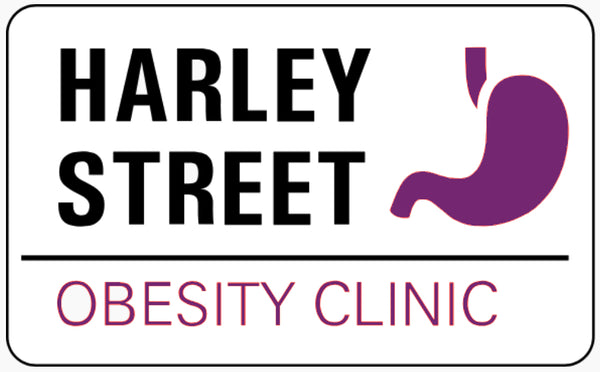Gastric Band
Laparoscopic Gastric Band Surgery
What is gastric band surgery?
Gastric band surgery is a form of weight-loss surgery that involves reducing the size of your stomach through an adaptable band, which limits the size of your meal portions.
The procedure is conducted laparoscopically (via keyhole surgery) while you are asleep under general anesthesia. Typically, the operation lasts from 30 minutes to one hour.
On average, individuals undergoing this procedure commonly shed up to 50% of their excess body weight.

About the operation:
The procedure includes the placement of an adjustable band around the upper portion of your stomach, forming a pouch. When you eat, this pouch rapidly fills, causing the food you consume to slowly pass a narrow opening formed by the band before entering the lower part of your stomach. From there, the food continues its typical journey through your digestive system.
The pace at which food exits your stomach depends upon the size of the opening from the pouch. This can be fine-tuned by introducing or withdrawing fluid from the band.
A slender tube links the band to an 'access port' situated beneath the skin of your chest or just below your ribs. About four to six weeks post-operation, the band is adjusted using a saline solution administered with a hypodermic needle, allowing time for surgical swelling to subside.
You are likely to undergo band adjustments around five or six times within the initial year after the surgery. This capability to modify the band enables tailored weight loss while reducing potential adverse effects.
What are the alternatives?
Additional surgical alternatives include laparoscopic gastric bypass or laparoscopic sleeve gastrectomy.
Typically, surgery is advised when non-surgical interventions, such as dietary changes, physical activity, and medication, have proven ineffective.
What are the advantages?
Less invasive than alternative bariatric treatments.
Reversible intervention.
Tailored adjustable treatment for individual patients.
Shorter hospital stay and faster recovery time compared to other bariatric treatments
What are the risks?
Gastric band surgery is generally a very safe procedure.
Nonetheless, to ensure you can make an informed decision and provide consent for the surgery, it's crucial that you are informed about potential side effects and the associated risks and complications of this procedure.
Side-effects
These are the unwanted, but mostly temporary effects of successful treatment.
It's probable that you'll experience some bruising, discomfort, and skin inflammation around the recuperating incisions.
You might encounter feelings of nausea or vomiting after meals, particularly if you eat too much.
Complications
This is when issues arise during or after the surgical procedure.
The majority of individuals undergoing this surgery will not encounter significant complications.
Similar to any surgical procedure, there are inherent risks connected to having general anesthesia. Possible complications include unforeseen reactions to the anesthesia, excessive bleeding, or the formation of blood clots, typically within leg veins (deep vein thrombosis, DVT) or the lungs (pulmonary emboli, PE).
Complications specific to a gastric band operation are listed here:
Possible Complications:
- Infection: Typically, antibiotics are administered during surgery to prevent infection. Should an infection not respond to antibiotics, removal of the band might be necessary.
- Organ Damage in Abdomen: In case of damage to other abdominal organs, subsequent surgery might be required for repair.
- Band Issues: Instances where the band shifts position, leaks, or traverses the stomach wall can occur. If these events occur, repositioning, removal, or replacement of the band might be needed.
- Gallstones: Swift weight loss carries a risk of gallstone formation, potentially leading to painful episodes that require surgical removal.
- Inadequate Weight Loss: It's plausible that you may not achieve the desired weight loss, or previously lost weight might be regained after band surgery.
- Conversion to Open Surgery: In certain scenarios, your surgeon might need to switch from keyhole surgery to open surgery due to safety considerations. This entails a larger abdominal incision.
The specific risks are unique to your circumstances and will vary from person to person. Overall, there is a 5-10% risk of encountering adverse effects (as mentioned above) and a 1 in 2,000 (0.05%) chance of death attributed to this procedure. About one in 10 patients may need further surgery for these or other complications.
How long to recover from surgery?
If you are well enough, discharge may be on the same day as your surgery. Alternatively, an overnight stay in the hospital might be required. Complete recuperation following gastric band surgery typically spans one to two weeks.
Is the gastric band operation reversible?
Typically, the intention is for the gastric band to remain in place permanently, increasing the likelihood of effective weight loss and its maintenance. Nonetheless, the band can be removed whenever necessary; however, weight regain is probable upon removal.
Should the need arise for the band's removal, this can be achieved through minimally invasive keyhole (laparoscopic) surgery, although open surgery might be required in some cases.
This factsheet is designed for individuals considering gastric band surgery or seeking information about it. While extensive efforts are made to provide comprehensive insights into gastric band surgery, certain specific details might not be covered herein. Furthermore, your care will be tailored to suit your unique requirements, potentially differing from the information presented here.
Further information
Association for the Study of Obesity (ASO) 020 8503 2042 www.aso.org.uk
British Obesity Surgery Patients Association (BOSPA) 0845 602 0446 www.bospa.org
